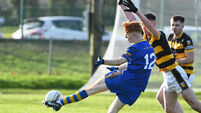Emergency services fear 25% of members could be infected
Ambulance services under Dublin Fire Brigade believe that a number of patients that they are bringing to hospital could be treated at home. The fire brigade services, who respond to thousands of ambulance calls a month, say their units are now fully stocked with infection control supplies.
But there are fears many of its members will become infected while ferrying patients to hospitals, said Seamus Power, co-ordinator with the emergency medical section of the Dublin Fire Brigade.













